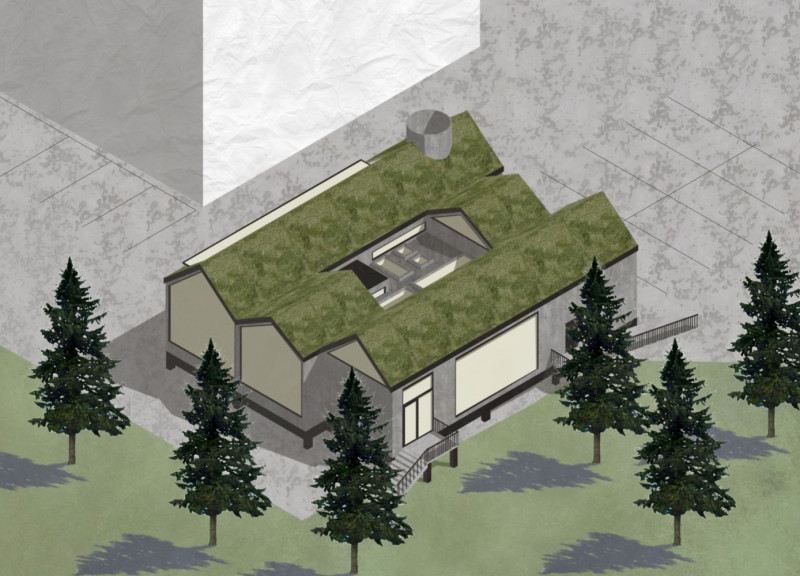5 key facts about this project
At the heart of the project is its multifunctional purpose, which accommodates a variety of activities catering to diverse user needs. This adaptability is reflected in the flexible floor plans, designed to allow for multi-use spaces that can easily transition from one function to another. The design emphasizes openness and accessibility, ensuring that natural light permeates the interiors. This focus on transparency not only enhances the user experience but also fosters a sense of community, inviting interaction among visitors.
The materiality of the project plays a crucial role in its overall aesthetic and performance. A careful selection of materials, such as locally sourced timber, reinforced concrete, and high-performance glazing, contributes to a balance between durability and environmental awareness. The use of timber not only provides warmth and texture to the façade but also maintains a low carbon footprint, aligning with sustainable practices. Reinforced concrete offers structural integrity, while large glass panels create an inviting atmosphere and blur the lines between indoor and outdoor spaces. This combination of materials enhances the project’s connection to its site and reflects a contemporary approach to architectural design.
Unique design approaches are evident throughout the project. The use of overhangs and shading devices is particularly notable, as they provide passive solar control while creating dynamic visual elements on the exterior. These features not only improve energy efficiency but also contribute to the overall composition of the building, which presents a visually appealing profile against the skyline. Additionally, the integration of green spaces, both at ground level and on rooftops, contributes to biodiversity, enhances the microclimate, and offers residents a respite from the urban environment.
Moreover, the project incorporates advanced technological solutions to optimize energy performance. Smart building systems regulate heating and cooling, ensuring that energy consumption is minimized without compromising comfort. The strategic placement of solar panels is another key element, harnessing renewable energy to power the building. These innovative features are seamlessly integrated into the architectural design, demonstrating a commitment to modern sustainable practices.
The overall design outcome of the project is a cohesive statement that prioritizes both form and function. The marriage of aesthetics and practicality invites users to engage with the space, making it accessible and enjoyable. Clear circulation paths guide visitors through the building, promoting exploration and interaction with various amenities. Each area has been thoughtfully designed to cater to specific activities, whether it be quiet collaborative spaces, lively communal areas, or dedicated zones for focused work.
Additionally, the project's contextual sensitivity is noteworthy. The design respects the historical narratives of the surrounding architecture while introducing a contemporary vocabulary that enhances the neighborhood’s character. By considering local culture and the history of the site, the project not only becomes an architectural landmark but also a vital part of the community fabric.
In summary, this architectural project stands out for its commitment to sustainability, flexibility, and aesthetic coherence. It serves as a model for future developments that seek to balance architectural innovation with a deep respect for ecological and social contexts. Readers interested in further exploring the intricacies of this project are encouraged to review architectural plans, architectural sections, and architectural designs for a deeper understanding of the thoughtful ideas that shaped its creation. The reflection of community engagement, sustainable materials, and innovative design approaches all contribute to a building that is both functional and inspiring. The architectural ideas embedded in this project invite ongoing dialogue about the role of architecture in shaping our environments and enhancing human experiences.


























